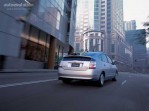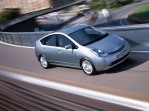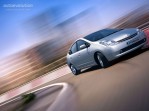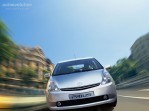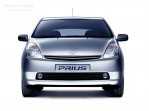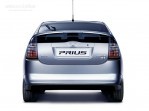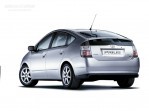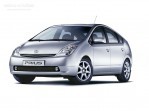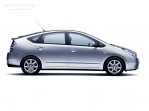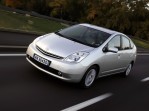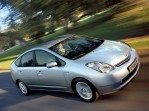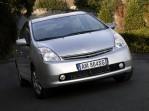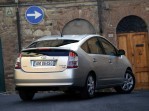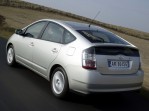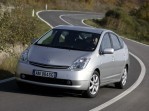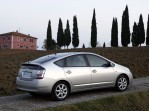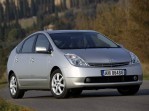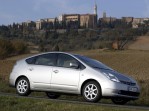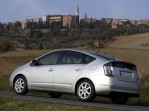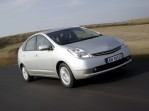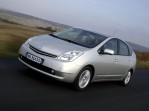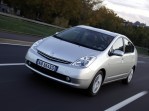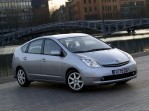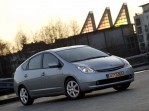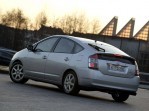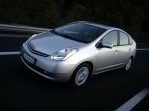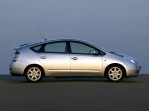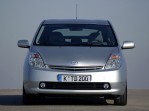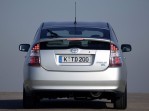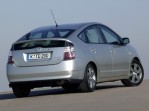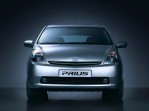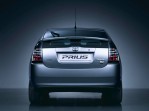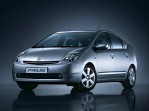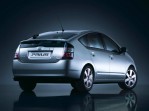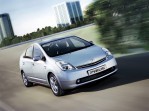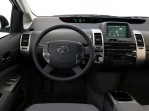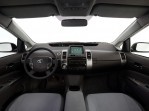Body style: Hatchback
Segment: Compact
Production years: 2003, 2004, 2005, 2006
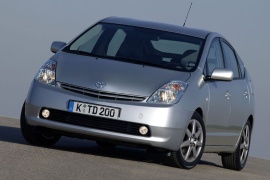 45 Photos
45 PhotosToyota learned from its mistakes, and when it launched the car’s second generation at the 2003 New York International Auto Show, customers were delighted in many ways.
After seven years on the market, the first generation of the Prius was replaced. Its successor was no longer a sedan but a liftback with a Kammback rear end that looked a little bit better. The design was not the most significant aspect of the vehicle. Toyota focused more on the drivetrain and, unlike the previous generation, on the interior, which was significantly upgraded in all areas. As a result, while the Prius XW10 (first generation) was sold in about 123,000, its successor reached around 1.2 million customers. Thanks to its 0.26 drag coefficient and the improved engine and motor, the XW20 was responsible for making hybrid vehicles popular worldwide. It wasn’t the only gas-electric vehicle anymore, but it reached an iconic status on the market, especially since it didn’t look like any other Toyota.
With a front fascia that didn’t look angry or aggressive, the second generation of the Prius attracted more customers. Its vertical headlights flanked a narrow grille while the carmaker’s badge adorned the hood. Lower, the wrapped-around plastic bumper featured a lower air intake that could host a set of fog lamps, depending on the grade and market.
From its profile, the Prius showed a short and tall nose followed by a panoramic windshield that almost continued in the same line with the hood. Its arched roofline was sloped down towards the back of the vehicle, sporting a raked-forward rear window attached to the tailgate. A tiny duck-tail helped the car get less turbulence behind it and damage the drag coefficient. Out back, Toyota installed a small but broad window under the spoiler. The car came on the market in an era when car manufacturers tried to provide vehicles with clear taillights, and the automaker installed them on the Prius, flanking the trunk opening.
Inside, the Prius was a clear step forward above its predecessor. The wide dashboard looked clean and sported the instrument cluster in the middle, close to the windshield, but with the digits on the driver’s side displayed on an LED screen. Fronting the driver was a redesigned, four-spoke steering wheel with buttons that controlled media and the data shown by the car’s onboard computer. At the same time, atop the center stack, Toyota installed an LCD for the infotainment system that controlled the stereo and the navigation and showed data about the hybrid drivetrain. The front bucket seats were separated by a narrow center console where the automaker installed a pair of cup holders and a storage compartment under the armrest. In the back, there was enough legroom and headroom for two adults, although three could sit there if needed. Behind the cabin, Toyota placed a decently sized trunk.
The second generation of the Prius was packed with technology. In addition to the infotainment and drivetrain, the car was available with a smart key (keyless entry and start), which was uncommon for those times. Its 1.5-liter gasoline engine ran in the Atkinson cycle and was paired with an e-CVT transmission. In addition, the 50 kW (67 hp) motor helped the car get better acceleration times than the previous Prius.
TOYOTA Prius 2003, 2004, 2005, 2006
- 1.5L 1AT (78 HP)
TOYOTA Prius
1.5L 1AT (78 HP)
ENGINE SPECS - 1.5L 1AT (78 HP) | |
|---|---|
| Cylinders: | L4 |
| Displacement: | 1460 cm3 |
| Power: | 57 KW @ 5000 RPM 78 HP @ 5000 RPM 76 BHP @ 5000 RPM |
| Torque: | 85 lb-ft @ 4000 RPM 115 Nm @ 4000 RPM |
| Fuel System: | Multipoint Injection |
| Fuel: | Hybrid |
PERFORMANCE SPECS | |
|---|---|
| Top Speed: | 105.6 mph (170 km/h) |
| Acceleration 0-62 Mph (0-100 kph): | 10.9 s |
TRANSMISSION SPECS | |
|---|---|
| Drive Type: | Front Wheel Drive |
| Gearbox: | 1-Speed automatic |
BRAKES SPECS | |
|---|---|
| Front: | Ventilated Discs |
| Rear: | Discs |
TIRES SPECS | |
|---|---|
| Tire Size: | 195/55 R16 |
DIMENSIONS | |
|---|---|
| Length: | 175.2 in (4450 mm) |
| Width: | 67.7 in (1720 mm) |
| Height: | 58.7 in (1491 mm) |
| Front/rear Track: | 59.4/58.3 in (1,509/1,481 mm) |
| Wheelbase: | 106.3 in (2700 mm) |
| Ground Clearance: | 5.5 in (140 mm) |
| Cargo Volume: | 14.4 cuFT (408 L) |
| Aerodynamics (Cd): | 0.26 |
WEIGHT SPECS | |
|---|---|
| Unladen Weight: | 2810.9 lbs (1275 kg) |
| Gross Weight Limit: | 3803 lbs (1725 kg) |
FUEL ECONOMY (NEDC) | |
|---|---|
| City: | 47 mpg US (5 L/100Km) |
| Highway: | 56 mpg US (4.2 L/100Km) |
| Combined: | 54.7 mpg US (4.3 L/100Km) |
| CO2 Emissions: | 104 g/km |






